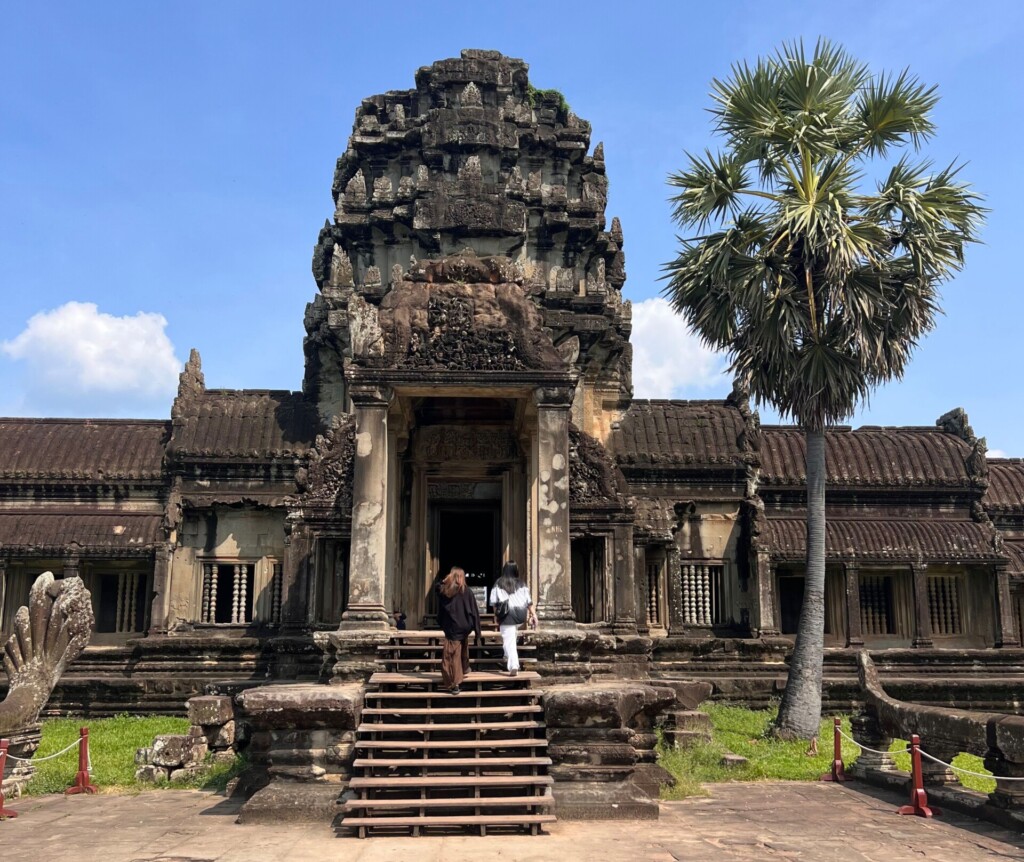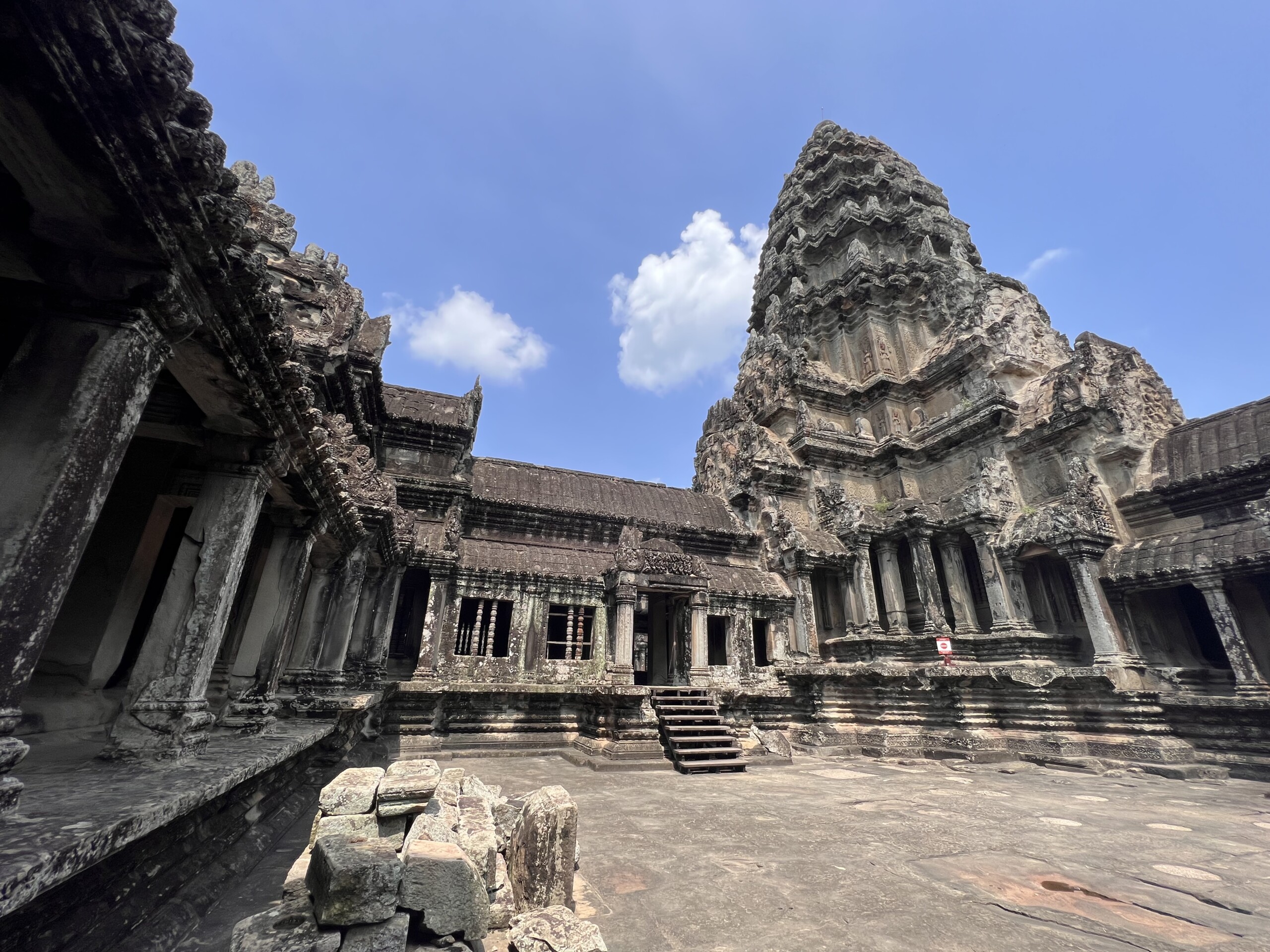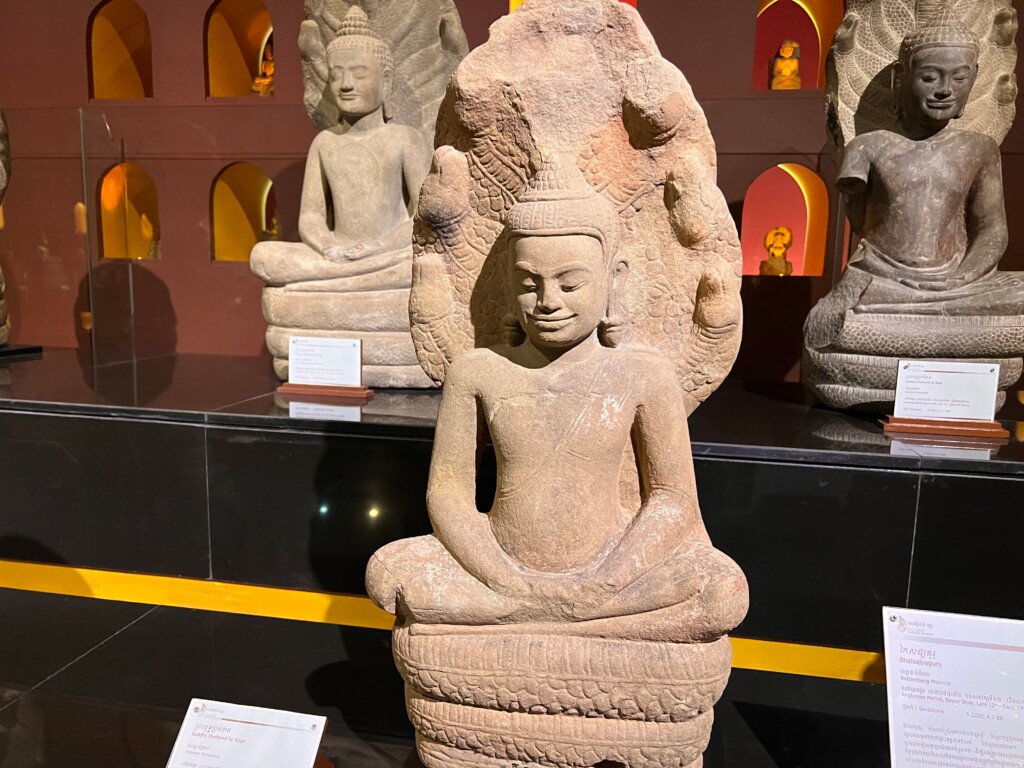Cambodia is a beautiful and mysterious place. It’s easy to see why more and more tourists are choosing it as a vacation destination. Jeremy took a solo trip halfway around the world to take in this wondrous place. He has a lot to share about his time in Cambodia in this very thorough blog.
Exploring Angkor Wat: Your Ultimate Guide to Cambodia’s Crown Jewel
Hey there, adventurers! Get ready to dive into one of the most incredible places on Earth: Angkor Wat in Cambodia. This iconic temple complex isn’t just a historical site; it’s a journey through time, a blend of spirituality, and an architectural marvel all rolled into one. So, buckle up as we walk you through the top things you need to know for an unforgettable visit to Angkor Wat.
1. The Grand Entrance: Go In Through the Back Door
First things first, let’s talk about how to make your entrance. Most visitors flock to the West Entrance, creating a crowd that can take away from the serenity of the place. Instead, take a tip from the pros and enter through the East Entrance. It’s like stepping into a hidden world. You’ll find yourself almost alone, surrounded by the quiet grandeur of this ancient site. It’s a peaceful, serene start to your journey, especially if you visit in the early afternoon after the sunrise rush has dissipated.

2. Dress for the Occasion: Stay Cool and Respectful
Cambodia is hot—like, really hot. So, when visiting Angkor Wat, dress appropriately. Lightweight, breathable clothing is a must. You might be tempted to wear shorts and a tank top, but remember, this is a religious site. Opt for something respectful yet cool, like a loose-fitting shirt and long pants. And don’t forget to bring a hat, sunglasses, and plenty of water. The heat can be intense, and staying hydrated is key.

3. Climbing to the Top: The Steep Steps of Angkor Wat
One of the highlights of Angkor Wat is the climb to the top of the central tower. But fair warning: the stairs are steep—really steep. If you’re not in the best physical shape, it’s going to be a challenge. But the view from the top is worth every bit of effort. You’ll be rewarded with breathtaking views of the temple complex and the surrounding landscape. Just be cautious, take your time, and wear comfortable shoes.
4. The Cultural Riches: History and Religion
Angkor Wat isn’t just a temple; it’s a tapestry of history and culture. Originally built as a Hindu temple dedicated to the gods Shiva, Brahma, and Vishnu, it later became a Buddhist site. As you explore, you’ll see intricate bas-reliefs depicting epic stories and divine figures. The craftsmanship is astounding, and each carving tells a story. It’s a vivid reminder of the sophisticated civilization that once thrived here.

5. Be Present: Absorb the Atmosphere
In the age of Instagram, it’s easy to get caught up in snapping photos. But don’t forget to put down your camera and just be present. Angkor Wat is a place that deserves more than just a quick selfie. Take a moment to sit down, breathe, and take in the sheer beauty and history surrounding you. Let the ancient stones and carvings speak to you, and feel the centuries of history that have unfolded here.
Angkor Wat is more than just a tourist attraction; it’s a journey into a different world. It’s a place where history, culture, and spirituality intertwine, offering a unique experience that’s both humbling and inspiring. So, if you’re planning a trip to Cambodia, make sure Angkor Wat is at the top of your list. And remember, it’s not just about seeing the sights—it’s about feeling the history and culture that make this place so special.

Bonus Tip: The Local Experience
Cambodia has managed to do something truly remarkable—attracting tourists from all over the world while keeping prices incredibly low. We’re talking about four-star hotels for around 30 bucks a night, personal tour guides for just 20 bucks a day, and beers on one of the wildest party streets in Asia for about a dollar a bottle. And all this just a stone’s throw away from one of the world’s wonders, Angkor Wat, a thousand-year-old temple that draws millions of visitors from around the globe.
Siem Reap: What else to see in the Cambodia Capital
Meeting Sat Dool: My Guide and Friend
After landing, I met the coolest guy in Cambodia, my cab driver Sat Dool. We used the hour-long drive into town to chat about the country he loves and its complicated past. Sat shared stories of his family’s experiences during Cambodia’s dark history, including the brutal Khmer Rouge regime and the subsequent civil war that left millions dead and the countryside littered with landmines. His brother was among those who tragically lost their lives. Despite this painful history, Sat is optimistic about Cambodia’s future, hoping to see more tourists visit Angkor Wat and beyond.
Exploring the Angkor National Museum and the Cambodia Heritage
With limited time in Siem Reap, I was grateful to have Van Rattan as my guide. A local expert, Rattan recommended our next stop—the Angkor National Museum. This museum offers a journey through the rise of the Khmer civilization, housing over a thousand treasures that date back thousands of years. The museum’s design, reminiscent of the Guggenheim, features a spiral ramp leading to various exhibits. The calm reflecting pool at the center sets the perfect mood for absorbing the rich history on display.
My favorite part of the museum was the Thousand Buddha Gallery, showcasing a stunning collection of Buddha statues and relics from different eras. Each piece is unique, representing various styles, postures, and materials. It’s a serene and beautiful space, perfect for finding a moment of zen. At just 11 dollars for entry, it’s a must-visit for anyone wanting to delve into Cambodia’s cultural heritage.

A Night at the Fair Circus
As night fell, we made our way to one of Siem Reap’s most unique attractions—the Fair Circus. This small tented venue, famous for holding the record for the longest circus performance, offers an unforgettable show. The performance combines theater, music, and dance to tell Cambodia’s story, featuring fire acts and aerial acrobatics that leave the audience spellbound. Tickets cost around 38 dollars, which supports the performers and their mission to uplift young artists out of poverty. The Fair Circus has even toured internationally, sharing its incredible talent with audiences in cities like Montreal and New York.
The Bustling Pub Street
No trip to Siem Reap would be complete without experiencing the nightlife on Pub Street. As soon as the sun sets, this street transforms into a vibrant hub of activity. Bright lights, loud music, and a sea of people create an electric atmosphere. Whether you’re looking for a cheap drink, a lively dance floor, or a quirky experience like fish pedicures, Pub Street has it all. However, it’s essential to be aware of the darker side, including the prevalence of human trafficking. It’s a serious issue that the country needs to address to continue attracting the right kind of tourists.
For me, Pub Street was all about soaking in the energy, grabbing a quick meal, and enjoying a cold beer. Despite the challenges, there’s something undeniably captivating about the nightlife here. The mix of cultures, the street food, and the vibrant markets make Asia, and Cambodia in particular, an unforgettable destination.

Shopping at Siem Reap’s Markets
No visit to Cambodia is complete without exploring the local markets. Whether it’s the old market during the day or one of the many night markets, there’s plenty to see and buy. You can find everything from souvenirs and handicrafts to delicious street food. The prices are reasonable, and bargaining is expected, adding to the experience.
From Fair Trade Market to Made in Cambodia Market and the Siem Reap Night Market, these bustling hubs offer a glimpse into the local way of life. They’re open late, making them a perfect stop after a day of exploring. You can easily get to these markets from anywhere in town for just a couple of dollars on a tuk-tuk.
The People of Siem Reap, Cambodia
As my time in Siem Reap came to an end, I couldn’t help but feel a deep appreciation for the people I met. From my guide Van Rattan, who is so proud of his hometown, to Sat Dool, who warmly welcomed me to Cambodia, these individuals made my trip unforgettable. If you’re planning a visit, consider reaching out to them for a more personal experience. Their stories and insights add depth to the visit, making it much more than just a tourist stop.
So there you have it, the top 5 things to do in Siem Reap, Cambodia. This city is rich in history, culture, and friendly faces. Whether you’re here for a short visit or an extended stay, there’s something for everyone. And who knows, maybe you’ll find yourself falling in love with this incredible place, just as I did.

Landing at the Brand-New Siem Reap Airport in Cambodia
Landing on a sunny October day, I felt a surge of excitement as one of the first passengers to walk through the new Siem Reap Angkor International Airport. This wasn’t just any airport; it was a symbol of hope and a new beginning for Cambodia, a country eager to welcome millions of tourists post-pandemic.
As I walked through the pristine terminal, I couldn’t help but marvel at the state-of-the-art design. The shops were still setting up, and the luggage carts had just been unwrapped. After three years of construction, this $880 million project stood as a beacon of hope for a country that has faced significant challenges in recent years.
But why did Cambodia need a new airport? The answer lies just a few miles away at the Angkor Wat Temple Complex. This UNESCO World Heritage Site is not only the largest religious structure in the world but also a fragile monument built in the 1100s. Concerns about vibrations from the nearby old airport damaging the temple’s foundation led to the construction of this new facility, strategically located 25 miles away. This ensures the preservation of Angkor Wat while still accommodating the influx of tourists eager to explore its ancient beauty.
The Cambodian government hopes this new airport will handle 65,000 flights and 7 million passengers annually, with plans to increase to 112,000 flights and 12 million passengers by 2040. The country’s appeal lies in its affordability and rich history. You can enjoy a beer on Siem Reap’s famous Pub Street for about a dollar or stay in a beautiful hotel for just $35 a night. Plus, tuk-tuks—those charming little vehicles—are the perfect way to explore the city, costing around $15 a day.
For Sat, the new airport isn’t just a building; it represents a chance for a better future, hoping it will bring more visitors and opportunities to Cambodia.
China has played a significant role in this transformation, funding much of the airport’s construction. They plan to establish 300 weekly flights between Cambodia and mainland China, with an even bigger airport set to open in Phnom Penh in 2025. While some locals express concern about China’s growing influence, there’s no denying the potential economic benefits of these developments.
The new airport beautifully incorporates Cambodian culture, featuring a stunning six-ton statue of the four-faced Brahma at its center. The statue symbolizes compassion, kindness, sympathy, and equanimity, welcoming tourists from all directions. It’s a powerful reminder of Cambodia’s rich cultural heritage and the promise of a brighter future.
As tourists start to arrive in droves, the Siem Reap Angkor International Airport stands as a testament to the resilience and hope of the Cambodian people. For individuals like Sat, it represents a chance to build a better life after years of hardship. This isn’t just an airport—it’s a new chapter in Cambodia’s story, one filled with promise and potential.
So, what are you waiting for? Pack your bags, book that flight, and get ready for an adventure of a lifetime at Angkor Wat. You won’t regret it!

